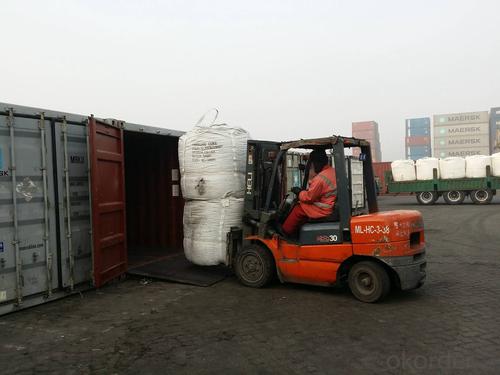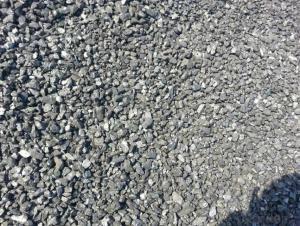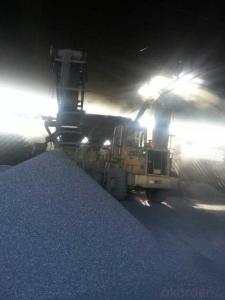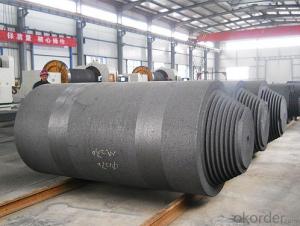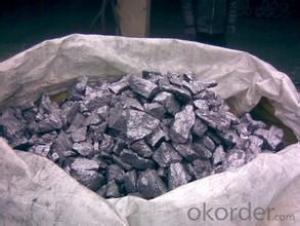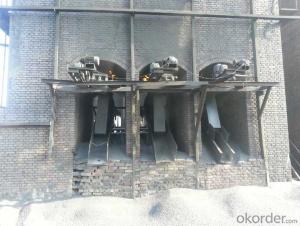FC90% Calcined Anthracite Coal in high quality
- Loading Port:
- Tianjin
- Payment Terms:
- TT OR LC
- Min Order Qty:
- 20.2
- Supply Capability:
- 9550 m.t./month
OKorder Service Pledge
OKorder Financial Service
You Might Also Like
Introduction
Calcined Petroleum Coke comes from delayed coke which extracted from oil refinery. Although Calcined Petroleum Coke contains a little bit higher level of sulfur and nitrogen than pitch coke, the price advantage still makes it widely used during steel-making and founding as a kind of carbon additive/carburant.
Features
Carbon Additive also called Calcined anthracite Coal, Gas Calcined Anthracite Coal, Carbon Raiser, Recarburizer, injection coke, charging coke and etc.
It is playing more and more important role in the industry.The main raw material of our Carbon Additive is Ningxia unique high quality Taixi anthracite, with characteristic of low ash and low sulfur. Carbon additive has two main usage, fuel and additive. When being used as the carbon additive of steel-smelting, and casting, the fixed carbon may achieve above 95%. Carbon additive is becoming more and more crucia in the steel and foundry industry.
Best quality Taixi anthracite as raw materials through high temperature calcined at 1200-1250 ℃ for 24 hours by the DC electric calciner with results in eliminating the moisture and volatile matter from Anthracite efficiently, improving the density and the electric conductivity and strengthening the mechanical strength and anti-oxidation, It has good characteristics with low ash, low resistivity, low carbon and high density. It is the best material for high quality carbon products, it is used as carbon additive in steel industry or fuel.
Specifications
PARAMETER UNIT GUARANTEE VALUE | |||||
F.C.% | 95MIN | 94MIN | 93MIN | 92MIN | 90MIN |
ASH % | 4MAX | 5MAX | 6MAX | 7MAX | 8MAX |
V.M.% | 1 MAX | 1MAX | 1.5MAX | 1.5MAX | 1.5MAX |
SULFUR % | 0.5MAX | 0.5MAX | 0.5MAX | 0.5MAX | 0.5MAX |
MOISTURE % | 0.5MAX | 0.5MAX | 0.5MAX | 0.5MAX | 0.5MAX |
Pictures

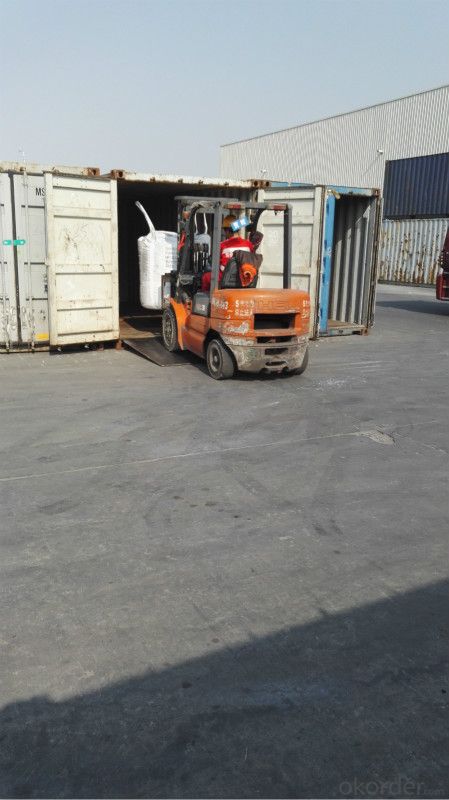

FAQ:
1. What is the packing?
In 25kg bag/ In jumbo bags without pallet/ Two jumbo bags with one pallet/ or as customers’ request
2. What is the production capacity?
10 thousand tons per month
3 What is payment term?
L/C, T/T
4 What is the service?
We will send sample to the third party(CIQ, CCIC, SGS,BV or to be discussed) for checking, and present the test certificate and loading repot of shipment.
- Q: What are the 3K, 12K, UD, etc. in the appearance requirements of the carbon fiber bicycle? What's the difference?
- 3K and "12K" refer to carbon fiber woven fabrics. 3K 12K cloth cloth texture is fine, coarse texture.UD is not imitation carbon fiber, refers to the polyethylene fiber woven fabric, the strength is lower than the carbon fiber, but the density is smaller than the carbon fiber, is often used to make bullet proof material.Carbon fiber and polyethylene fiber belong to high performance fiber.Advisory 181150695.
- Q: What is the carbon content of 45# steel?
- The main component of 45# steel is Fe (Tie Yuansu), and contains the following elements:C:0.42~0.50%Si:0.17~0.37%Mn:0.50~0.80%P: = 0.035%S: = 0.035%Cr: = 0.25%Ni: = 0.25%Cu: = 0.25%Density 7.85g/cm3, elastic modulus 210GPa, Poisson's ratio 0.269.
- Q: Why can carbon fiber in addition to static electricity ah?
- Is graphite conductive? Think about it!
- Q: How does carbon impact the pH balance of oceans?
- Carbon dioxide (CO2) released into the atmosphere is absorbed by the oceans, leading to a process called ocean acidification. When CO2 dissolves in seawater, it reacts with water to form carbonic acid, which then releases hydrogen ions, increasing the acidity of the water. This increase in acidity disrupts the pH balance of the oceans, making them more acidic. The increased acidity has numerous negative impacts on marine life and ecosystems. Many marine organisms, such as coral reefs, shellfish, and phytoplankton, rely on calcium carbonate to build their shells and skeletons. However, in more acidic waters, calcium carbonate becomes scarcer, making it harder for these organisms to maintain their structures. This can lead to weakened shells, reduced growth, and even death. Ocean acidification also affects the reproductive and physiological processes of marine organisms. For example, it can interfere with the development of fish larvae and disrupt the ability of some species to detect predators or find food. Additionally, the increased acidity can also harm the organisms that depend on these species for food, creating a ripple effect throughout the food chain. Furthermore, ocean acidification can impact the overall health and functioning of marine ecosystems. Coral reefs, often referred to as the "rainforests of the sea," provide habitats for a vast array of marine species. As the acidity of the oceans increases, coral reefs become more vulnerable and are at greater risk of bleaching and ultimately dying off. This loss of coral reefs would have devastating consequences for the biodiversity and productivity of marine ecosystems. In conclusion, the increase in carbon dioxide levels in the atmosphere leads to the absorption of CO2 by the oceans, resulting in ocean acidification. This process disrupts the pH balance of the oceans, making them more acidic. The increased acidity has detrimental effects on marine life, including the ability of organisms to build shells, reproduce, and function within their ecosystems. Addressing the issue of carbon emissions is crucial to mitigating the negative impacts of carbon on the pH balance of oceans and preserving the health and integrity of marine ecosystems.
- Q: Carbon content of fly ash and fly ash roasted vector what is the relationship?
- The loss of coal ash is mainly caused by the incomplete combustion of coal, the remaining carbon is introduced, and the carbon content is high, then the amount of burning is high. From the color, it can be clearly seen that the black fly ash has high carbon content and high ignition loss. Based on the molecular weights of C and CO2, a preliminary estimate is made.
- Q: Why carbon fiber resistant to low temperature
- Therefore, the carbon fiber composite core can be used in the design and manufacture of transmission carriers under extremely cold conditions, such as Antarctic research and research.
- Q: What is carbon sequestration?
- Carbon sequestration is the process of capturing and storing carbon dioxide (CO2) from the atmosphere in order to mitigate climate change. It involves various methods, such as planting trees and enhancing natural ecosystems, as well as using technology to capture and store CO2 emissions from industries and power plants. The goal is to reduce the amount of CO2 in the atmosphere, preventing it from contributing to global warming and its associated impacts.
- Q: How do humans contribute to carbon emissions?
- Humans contribute to carbon emissions in several ways. One major source of carbon emissions is the burning of fossil fuels for electricity, transportation, and heating. This includes burning coal, oil, and natural gas, which releases carbon dioxide (CO2) into the atmosphere. The use of these fossil fuels is prevalent in our daily lives, from powering our homes and vehicles to manufacturing goods and producing food. Additionally, deforestation, primarily driven by human activities such as agriculture, logging, and urbanization, also contributes to carbon emissions. Trees absorb CO2 and release oxygen, so when they are cut down, the stored carbon is released back into the atmosphere. Moreover, industrial processes, such as cement production and the manufacturing of chemicals, also release substantial amounts of CO2. Lastly, the livestock industry, particularly the production of beef and dairy products, contributes to carbon emissions through methane emissions from livestock and the deforestation associated with expanding grazing areas and growing animal feed. Overall, human activities directly and indirectly contribute to carbon emissions, highlighting the need for collective efforts to mitigate and reduce our impact on the environment.
- Q: How is carbon formed in stars?
- Carbon is formed in stars through a process known as nuclear fusion. In the core of a star, hydrogen atoms undergo a series of fusion reactions, ultimately fusing together to form helium. This process releases a tremendous amount of energy and is responsible for the heat and light that stars emit. As the core of a star continues to heat up and the pressure increases, helium atoms start fusing together to form heavier elements. At some point, three helium nuclei can combine to form a carbon nucleus. This process, known as the triple alpha process, requires very specific conditions, including a high enough temperature and pressure, for it to occur. The triple alpha process relies on the fact that carbon-12 has a very specific energy level that allows three helium nuclei to come together and form a stable carbon nucleus. This is because the energy level of carbon-12 aligns perfectly with the energy levels of helium nuclei, allowing them to overcome the electrostatic repulsion and fuse together. Once carbon is formed in the core of a star, it can continue to undergo fusion reactions to form even heavier elements, such as oxygen and nitrogen. These elements are crucial building blocks for the formation of planets, including our own Earth, as they are eventually expelled into space during a star's later stages of evolution.
- Q: What is carbon dating?
- Carbon dating is a scientific method used to determine the age of ancient artifacts or fossils by measuring the amount of carbon-14 remaining in them.
Send your message to us
FC90% Calcined Anthracite Coal in high quality
- Loading Port:
- Tianjin
- Payment Terms:
- TT OR LC
- Min Order Qty:
- 20.2
- Supply Capability:
- 9550 m.t./month
OKorder Service Pledge
OKorder Financial Service
Similar products
Hot products
Hot Searches
Related keywords


